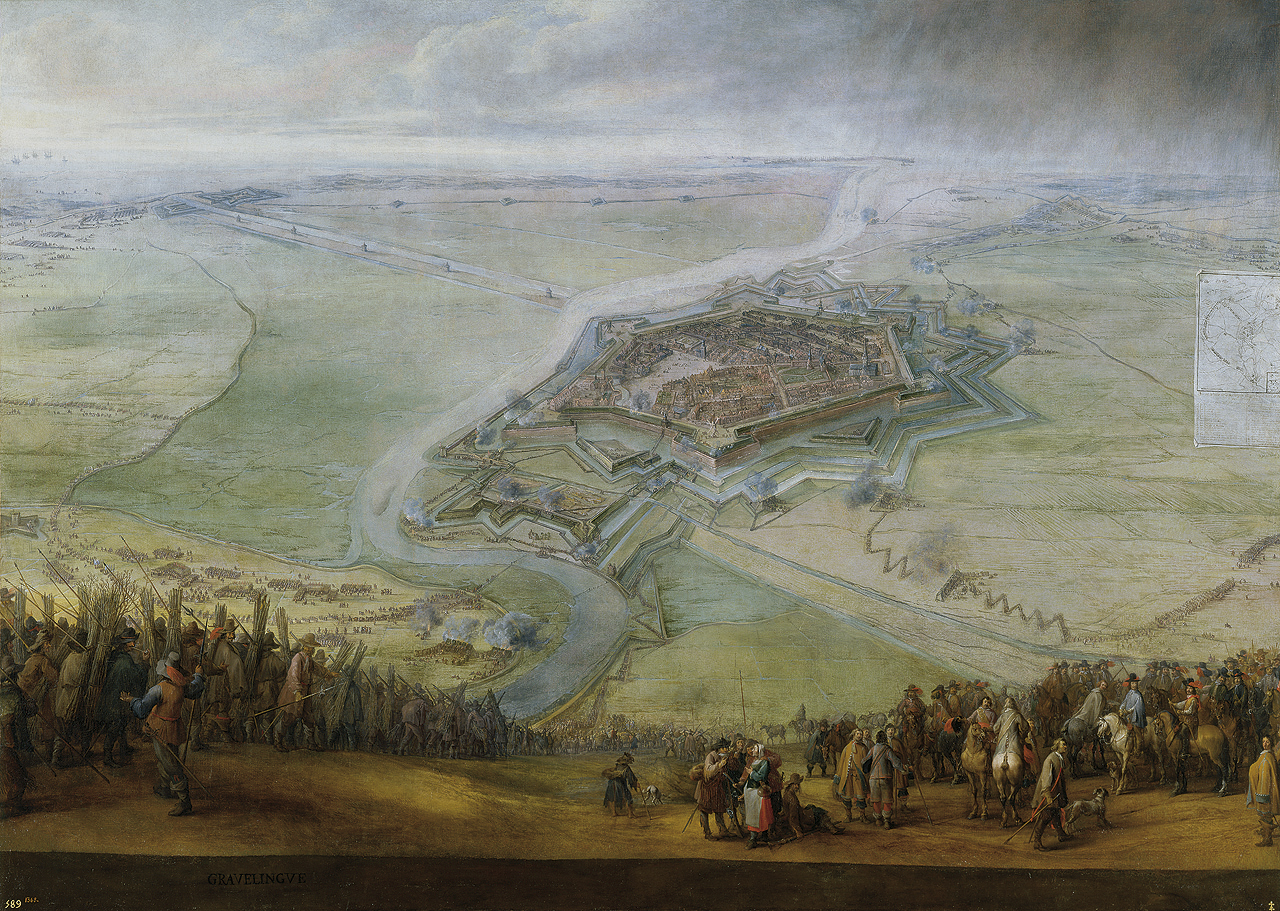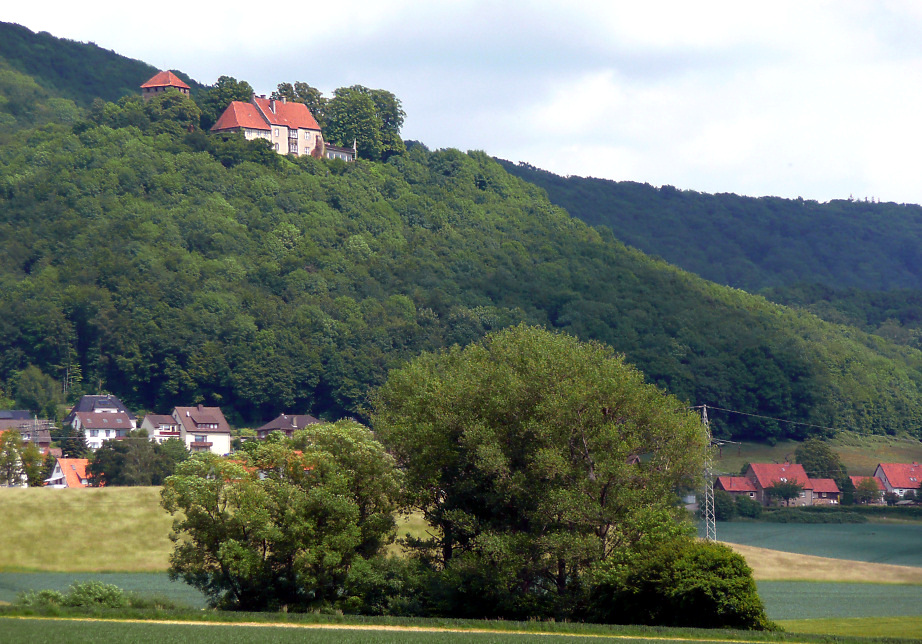|
Anton Of Schauenburg
Anton of Schauenburg (german: Anton von Schaumburg) (died 1558) was Archbishop-Elector of Cologne from 1557 to 1558. Biography Anton of Schauenburg was the son of Jobst I, Count of Holstein-Schauenburg and his wife Mary of Nassau-Siegen. His elder brother Adolf III of Schauenburg was his predecessor as Archbishop of Cologne (1547-1556). On 26 October 1557 the cathedral chapter of Cologne Cathedral elected Anton to be the new Archbishop of Cologne. This election was confirmed by Pope Paul IV on October 1557. Anton was never ordained as a priest or as a bishop, and had only achieved the clerical rank of subdeacon at the time of his death. He spent the bulk of his time as Archbishop attempting to improve the disastrous financial situation of the archbishopric. Anton died in June 1558. Cornelis Floris de Vriendt created matching tombs for Anton and his brother Adolf in Cologne Cathedral. Originally located in the choir, they were relocated to the apse chapels in 1863. Anton's is ... [...More Info...] [...Related Items...] OR: [Wikipedia] [Google] [Baidu] |
Archbishop Of Cologne
The Archbishop of Cologne is an archbishop governing the Archdiocese of Cologne of the Catholic Church in western North Rhine-Westphalia and is also a historical state in the Rhine holding the birthplace of Beethoven and northern Rhineland-Palatinate in Germany and was ''ex officio'' one of the Prince-electors of the Holy Roman Empire, the Elector of Cologne, from 1356 to 1801. Since the early days of the Catholic Church, there have been ninety-four bishops and archbishops of Cologne. Seven of these ninety-four retired by resignation, including four resignations which were in response to impeachment. Eight of the bishops and archbishops were coadjutor bishops before they took office. Seven individuals were appointed as coadjutors freely by the Pope. One of the ninety-four moved to the Curia, where he became a cardinal. Additionally, six of the archbishops of Cologne were chairmen of the German Bishops' Conference. Cardinal Rainer Woelki has been the Archbishop of Cologne since ... [...More Info...] [...Related Items...] OR: [Wikipedia] [Google] [Baidu] |
Apse Chapel
An apse chapel, apsidal chapel, or chevet is a chapel in traditional Christian church architecture, which radiates tangentially from one of the bays or divisions of the apse. It is reached generally by a semicircular passageway, or ambulatory, exteriorly to the walls or piers of the apse. Features In plan, the normal type of the tangential chapel is semicircular; some, however, are pentagonal, and some composed of a small circle, serving as choir, and part of a large circle, as nave; some are oblong with eastern apses. In England, sometimes an ambulatory connects the north and south aisles of the choir and from the ambulatory projects an eastern chapel or chapels. The eastern chevet of Westminster Abbey, surrounded by five apsidal chapels, is the only complete example of this feature in England. The common source of the ambulatory and radiating chapels seems to have been the church of St. Martin of Tours, where originally there was a choir of two bays, and an apse of five bays, ... [...More Info...] [...Related Items...] OR: [Wikipedia] [Google] [Baidu] |
Dukes Of Westphalia
Duke is a male title either of a monarch ruling over a duchy, or of a member of royalty, or nobility. As rulers, dukes are ranked below emperors, kings, grand princes, grand dukes, and sovereign princes. As royalty or nobility, they are ranked below princess nobility and grand dukes. The title comes from French ''duc'', itself from the Latin ''dux'', 'leader', a term used in republican Rome to refer to a military commander without an official rank (particularly one of Germanic or Celtic origin), and later coming to mean the leading military commander of a province. In most countries, the word ''duchess'' is the female equivalent. Following the reforms of the emperor Diocletian (which separated the civilian and military administrations of the Roman provinces), a ''dux'' became the military commander in each province. The title ''dux'', Hellenised to ''doux'', survived in the Eastern Roman Empire where it continued in several contexts, signifying a rank equivalent to a captain o ... [...More Info...] [...Related Items...] OR: [Wikipedia] [Google] [Baidu] |
Canons (priests)
Canon or Canons may refer to: Arts and entertainment * Canon (fiction), the conceptual material accepted as official in a fictional universe by its fan base * Literary canon, an accepted body of works considered as high culture ** Western canon, the body of high culture literature, music, philosophy, and works of art that is highly valued in the West * Canon of proportions, a formally codified set of criteria deemed mandatory for a particular artistic style of figurative art * Canon (music), a type of composition * Canon (hymnography), a type of hymn used in Eastern Orthodox Christianity. * ''Canon'' (album), a 2007 album by Ani DiFranco * ''Canon'' (film), a 1964 Canadian animated short * ''Canon'' (game), an online browser-based strategy war game * ''Canon'' (manga), by Nikki * Canonical plays of William Shakespeare * ''The Canon'' (Natalie Angier book), a 2007 science book by Natalie Angier * ''The Canon'' (podcast), concerning film Brands and enterprises * Canon ... [...More Info...] [...Related Items...] OR: [Wikipedia] [Google] [Baidu] |
House Of Schauenburg
The House of Schaumburg was a dynasty of German rulers. Until c. 1485, it was also known as the House of Schauenburg. Together with its ancestral possession, the County of Schaumburg, the family also ruled the County of Holstein and its partitions Holstein-Itzehoe, Holstein-Kiel, Holstein-Pinneberg (till 1640), Holstein-Plön, Holstein-Segeberg and Holstein-Rendsburg (till 1460) and through the latter at times also the Duchy of Schleswig. History The Schaumburgs were named after Schaumburg Castle, Lower Saxony, Schauenburg Castle, near Rinteln on the Weser, where the owners started calling themselves Lords (from 1295 Counts) of Schauenburg. Adolf I, Count of Holstein, Adolf I probably became the first Lord of Schauenburg in 1106. In 1110, Adolf I, Count of Holstein, Adolf I, Lord of Schauenburg was appointed by Lothair, Duke of Saxony to hold Holstein and Stormarn (gau), Stormarn, including Hamburg, as fiefs.Lemma Schauenburg/Schaumburg. In: Klaus-Joachim Lorenzen-Schmidt, Ortwin ... [...More Info...] [...Related Items...] OR: [Wikipedia] [Google] [Baidu] |
1558 Deaths
__NOTOC__ Year 1558 ( MDLVIII) was a common year starting on Saturday (link will display the full calendar) of the Julian calendar. Events January–June * January 7 – French troops, led by Francis, Duke of Guise, take Calais, the last continental possession of the Kingdom of England, in the Siege of Calais. * January 22 – The Livonian War begins. * February 2 – The University of Jena is founded in Thuringia, Germany. * February 5 – Arauco War: Pedro de Avendaño, with sixty men, captures Caupolicán (the Mapuche Gran Toqui), who is leading their first revolt against the Spanish Empire (near Antihuala), encamped with a small band of followers. * March 8 – The city of Pori ( sv, Björneborg) was founded by Duke John on the shores of the Gulf of Bothnia. * April 24 – Mary, Queen of Scots, marries Francis, Dauphin of France, at Notre Dame de Paris. July–December * July 13 – Battle of Gravelines: In France, Spanish fo ... [...More Info...] [...Related Items...] OR: [Wikipedia] [Google] [Baidu] |
Gebhard I Von Mansfeld-Vorderort
Johann Gebhard von Mansfeld-Vorderort, born circa 1525–30, was Archbishop-Elector of Cologne. He died in Frankfurt on 2 November 1562. Career Both Gebhard and his older brother were founding members of the Schmalkaldic League. A dispute between Gebhard and his brother, Johann Albert, Graf von Mansfeld zu Arnstein (1522–1586) in 1546, led to mediation by Martin Luther. In 1558, Gebhard of Mansfeld was elected archbishop of Cologne. During his tenure, the Diocese of Utrecht ceased to be a suffragan of Cologne, and the Deanery of Zyfflich was incorporated with the newly founded diocese of Roermond The Roman Catholic Diocese of Roermond is a diocese of the Latin Church of the Catholic Church, located in the Netherlands. The diocese is one of the seven suffragan dioceses in the ecclesiastical province of the Metropolitan Archbishop of Utrech ....Lins, J. (1908). Cologne. In The Catholic Encyclopedia. New York: Robert Appleton Company. Retrieved August 16, 2009 from New A ... [...More Info...] [...Related Items...] OR: [Wikipedia] [Google] [Baidu] |
Duke Of Westphalia
The Duchy of Westphalia (german: Herzogtum Westfalen) was a historic territory in the Holy Roman Empire, which existed from 1102 to 1803. It was located in the greater region of Westphalia, originally one of the three main regions in the German stem duchy of Saxony and today part of the state of North Rhine-Westphalia. The duchy was held by the Archbishops and Electors of Cologne until its secularization in 1803. Geography The duchy roughly comprised the territory of the present-day districts of Olpe and Hochsauerland, as well as the adjacent areas of the Soest district and Märkischer Kreis (Menden and Balve), from 1507 also the exclave of Volkmarsen (a former property of the Imperial Abbey of Corvey). The town of Soest was lost to the Duchy of Cleves-Mark after the Soest Feud in 1449. The duchy bordered on the territory of the Prince-Bishops of Münster beyond the Lippe river in the north and on the Prince-Bishopric of Paderborn in the northeast; both ecclesiastical pr ... [...More Info...] [...Related Items...] OR: [Wikipedia] [Google] [Baidu] |
House Of Schaumburg
The House of Schaumburg was a dynasty of German rulers. Until c. 1485, it was also known as the House of Schauenburg. Together with its ancestral possession, the County of Schaumburg, the family also ruled the County of Holstein and its partitions Holstein-Itzehoe, Holstein-Kiel, Holstein-Pinneberg (till 1640), Holstein-Plön, Holstein-Segeberg and Holstein-Rendsburg (till 1460) and through the latter at times also the Duchy of Schleswig. History The Schaumburgs were named after Schauenburg Castle, near Rinteln on the Weser, where the owners started calling themselves Lords (from 1295 Counts) of Schauenburg. Adolf I probably became the first Lord of Schauenburg in 1106. In 1110, Adolf I, Lord of Schauenburg was appointed by Lothair, Duke of Saxony to hold Holstein and Stormarn, including Hamburg, as fiefs.Lemma Schauenburg/Schaumburg. In: Klaus-Joachim Lorenzen-Schmidt, Ortwin Pelc (Hrsg.): ''Schleswig-Holstein Lexikon''. 2. Aufl., Wachholtz, Neumünster, 2006. Holstein was ... [...More Info...] [...Related Items...] OR: [Wikipedia] [Google] [Baidu] |
German Wikipedia
The German Wikipedia (german: Deutschsprachige Wikipedia) is the German-language edition of Wikipedia, a free and publicly editable online encyclopedia. Founded on March 16, 2001, it is the second-oldest Wikipedia (after the English Wikipedia), and with articles, at present () the -largest edition of Wikipedia by number of articles, behind English Wikipedia and the mostly bot-generated Cebuano Wikipedia.] Alternative language Wikipedias, 16 March 2001List of Wikipedias/Table meta.wikimedia.org, Statistics It has the second-largest number of edits behind the English Wikipedia and over 260,000 disambiguation pages. On November 7, 2011, it became the second edition of Wikipedia, after the English edition, to exceed 100 million page edits. The German Wikipedia is criticized because of several ongoing p ... [...More Info...] [...Related Items...] OR: [Wikipedia] [Google] [Baidu] |



